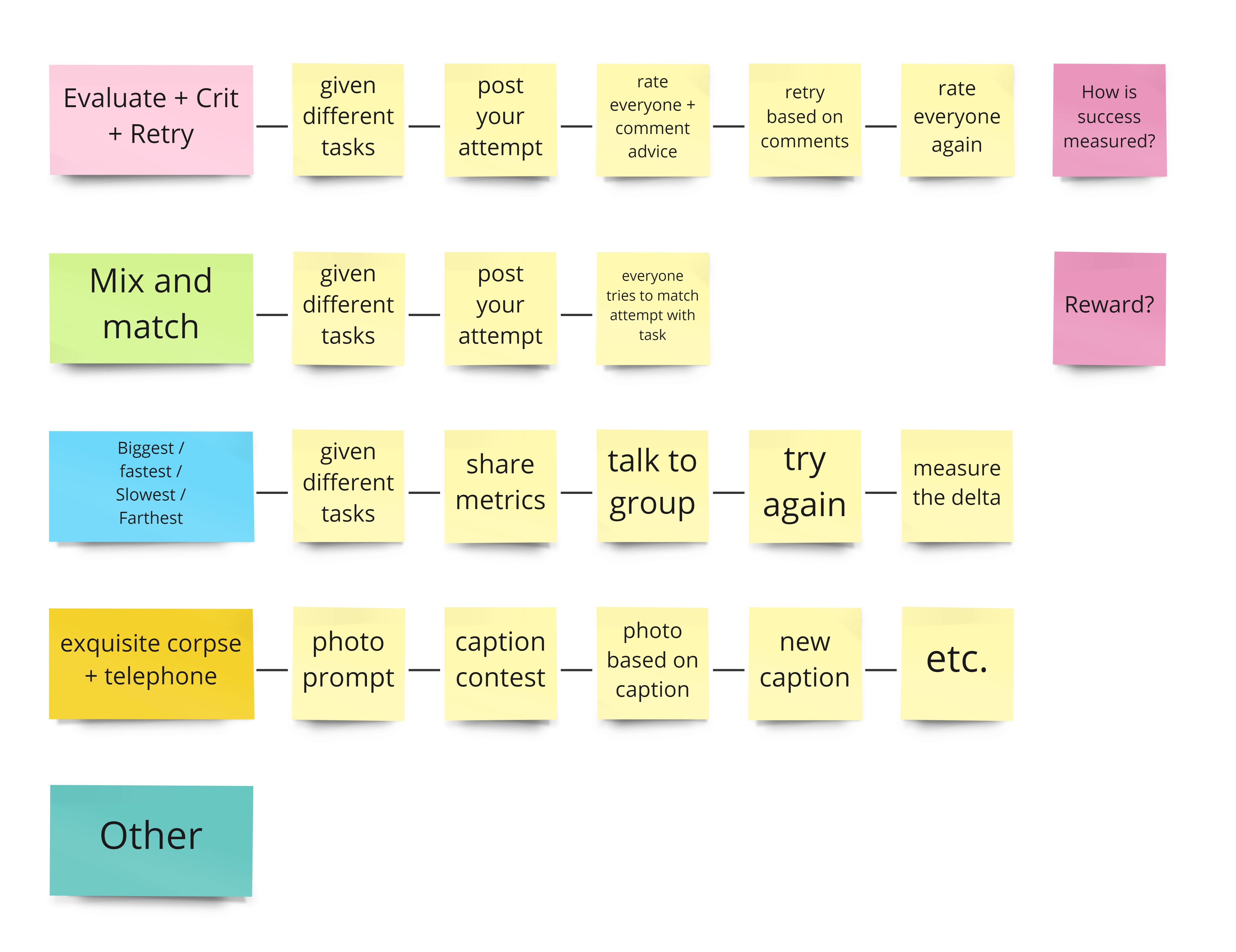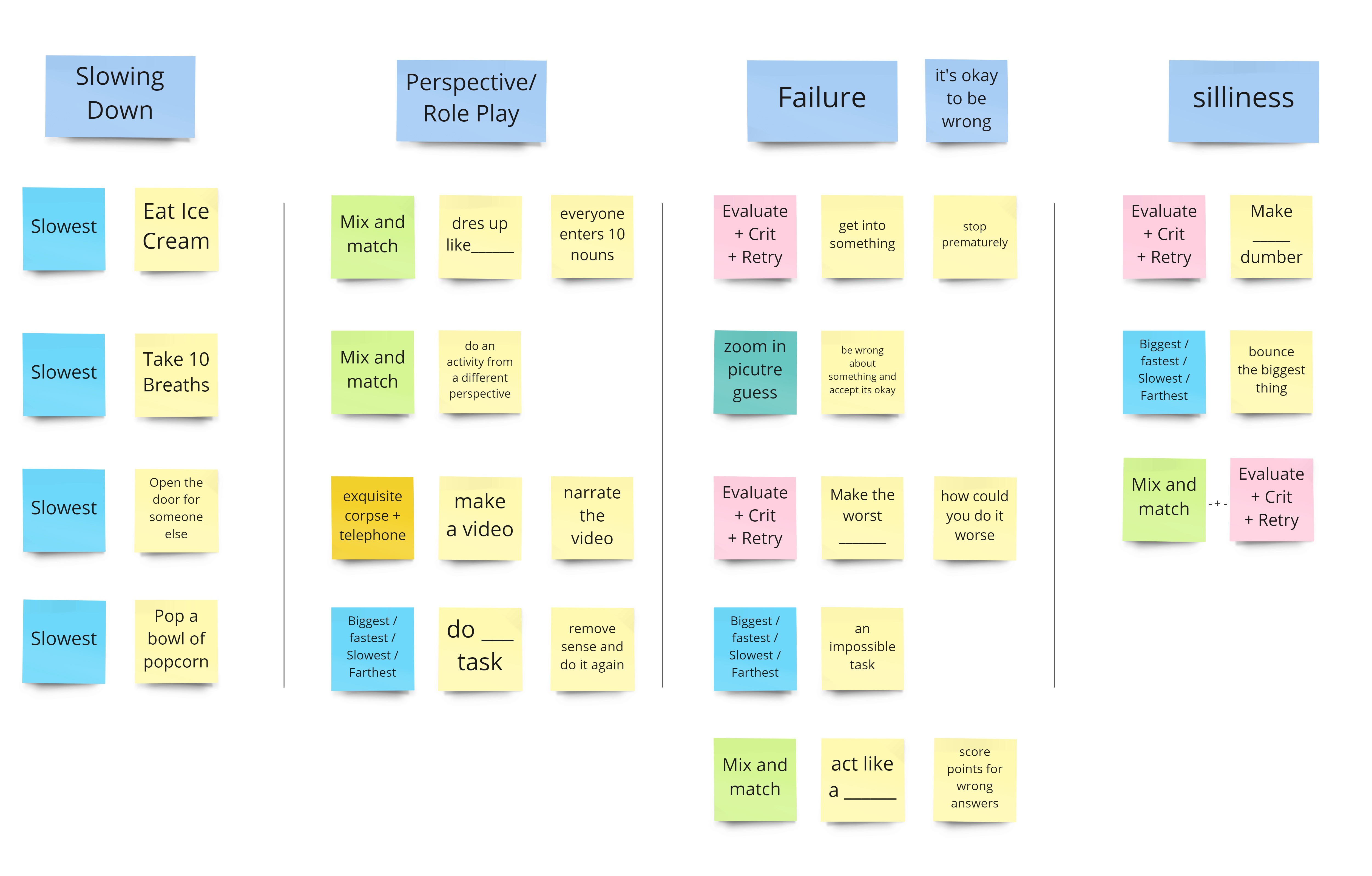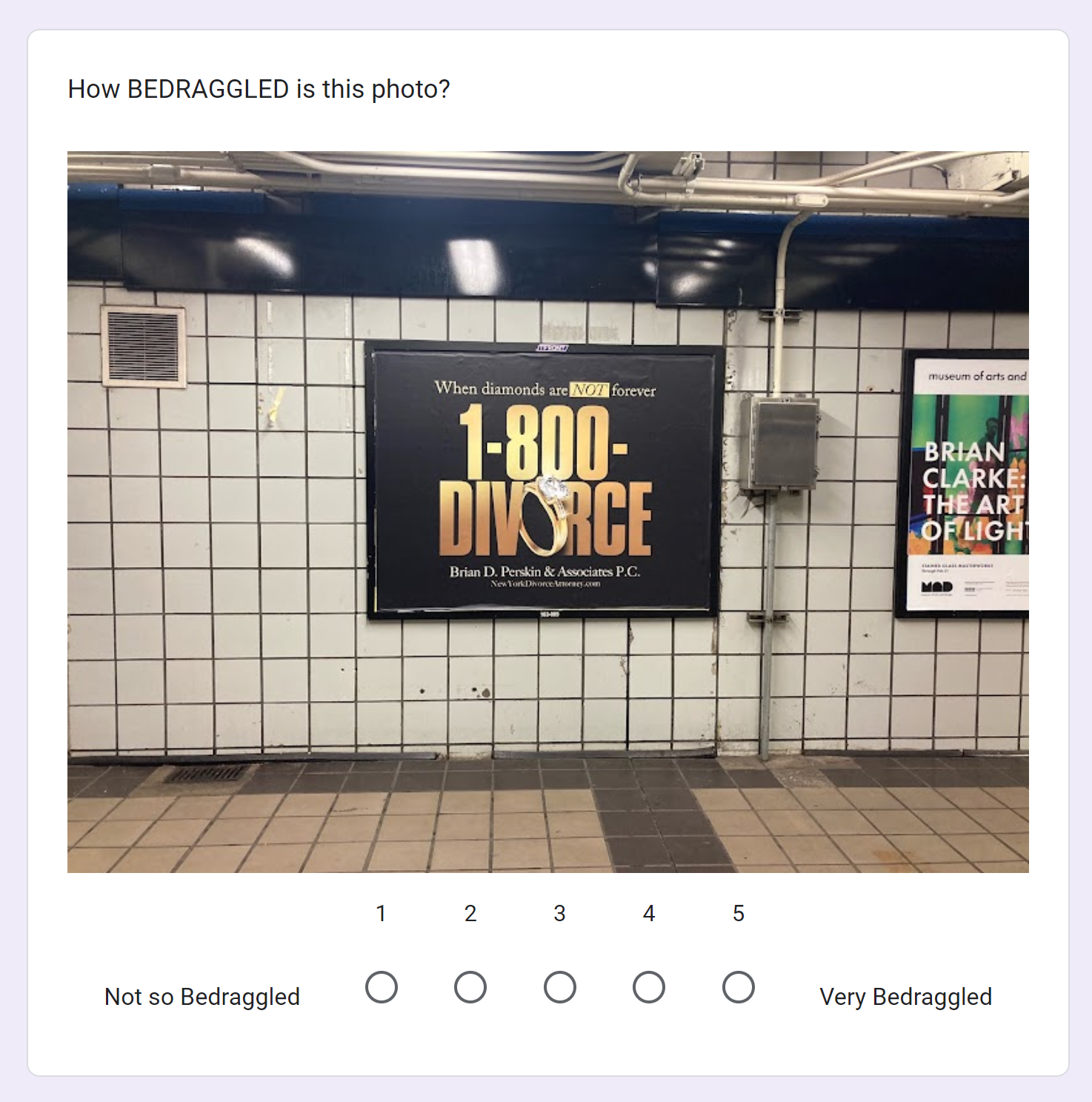As we grow out of adolescence, we grow out of our creativity. By un-adult-erating we reconnect with our creative selves. In this project I explored how we might create habitual disruptions that promote creativity. I prototyped and user tested an app based longform game and created promotional materials using Adobe Illustrator and After Effects.
Game Play
This game it's all about keeping up the streak!
Working as a team, individuals take turns taking the most (insert random group generated adjective) photo. You have 24 hours to take the first photo. But, as your streak goes up the allotted time for a turn goes down. The game ends when a team member fails to take a photo in time.
- Your content must be new, don't recycle old photos
- Gain bonuses for how quickly you complete the tasks
- Gain even larger bonuses for the quality of your submissions
Research and Development
The research component of this project focused on creativity, play and game development through secondary source material, surveys, and market research. I was following fun by looking into different types of play and understanding where creativity lies.
Insights
Creativity - The main takeaway here is that creativity often has an antagonistic relationship with what we consider “adult.” Constant output isn’t linked to creativity, the desire to be original is a form of editing, and we don’t grow into creativity we get educated out of it. Children are more likely to be creative and take risks because they are less nervous about the judgment of their peers.
Play - Play builds human trust, and friendship is a shortcut to play. Play and trust / friendship reinforce one another and held decrease fear of judgment. It’s important for play to have rules, so we know how and when to play. Play and work aren’t opposites, the opposite of play is depression. In fact there are creative benefits of switching between play and serious modes.
Creating Habits - Inorder to successfully create habits it’s important to start small, make things easy, and build in rewards.
Development
In this phase is mapped out types of play, styles of game play, desired learning outcomes and possible actions. I then developed tasks and games based on possible learning outcomes and designed a few styles of gameplay that involved performing Mad Libs inspired tasks, group feedback, and iterating on tasks.
Styles of Game Play

Tasks for Different Learning Outcomes![]()

User Testing / Prototyping
There were 25 participants (friends and family) divided into 6 groups / teams in the initial tests. The teams tested various styles of game play (mix and match, evaluate / crit / retry, and fastest) geared at different learning outcomes. These formats were tested using a mixture of email and google forms.
All the styles of play followed a similar framework:
- Submit - nouns, excellent paint colors, adjectives or a combination of these.
-
Create - make a thing, go to a place, or dress up randomly based on the group’s submissions
- Rate- rate photos, give suggestions, or match a paint color to the place.


Insights - There wasn't any active dialogue between the participants or urgency to submit responses. The interaction between members of the group was too limited and directed. This created a dynamic of parallel play rather than group play. Because of this, the tasks came across as creating more work for the individuals rather than encouraging play. Some users were slow to complete their tasks, on a few occasions I had to follow up with reminders.
Version 2
The big breakthroughs in the game design were building in time constraints, adding turn taking, and connecting players on a group chat. Now the game was all about keeping up the collective streak. This aligned players towards a silly singular goal, and kept the pace consistent. Instead of simply completing a task, now you were showing off your creative flair to the group. I tested this format with two user groups of 5 participants. Their feedback was overwhelmingly positive.